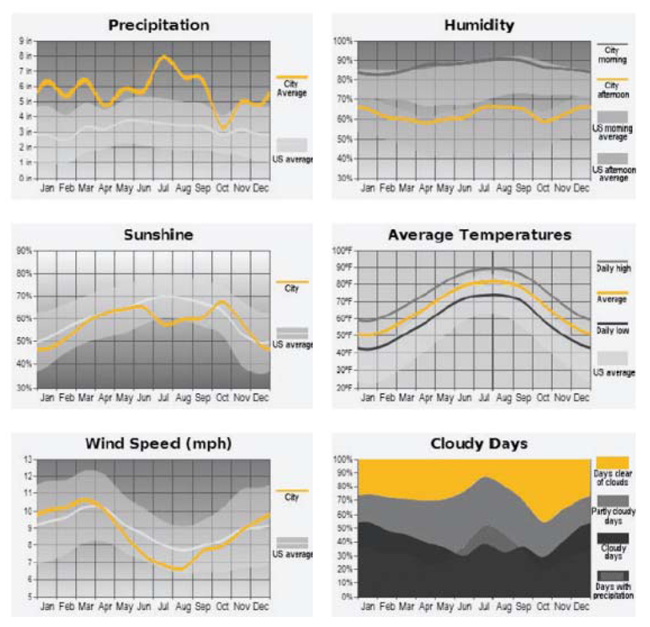Comprehensive Architectural Design Studio
Senior Studio
Site Analysis -Climate

In addition to the climate graphs ilusstrated here, the
students also generated wind roses, sun path charts, sundail
tools, and bioclimatic charts for use in diagramming specific
design responses to climate.
Design Performance Objective |
Comprehensive Building Design Project:
William M Colmer Visitors Center and Park Headquarters
Site Analysis - Climate
|
Student: Amy Fruge |
Software/Tools: |
|
|
Fall 2007 Arch. 5001 (UG) Comprehensive Architectural Design Studio
Part 3 - Site Analysis - Climate
These images illustrate the investigation of relationship between possible
design strategies and the climate and microclimate, and the quantitative physical properties of the site. The objective of these exercises was to develop an understanding of the relationship between the building program and the site that would serve to facilitate the realization of the designer’s intentions as the design process unfolded.
|
Investigative Strategy |
Climate Consultant, Sun, Wind and Light, The Green Studio Handbook, data provided by the National Park Service, etc.
|
Evaluation Process |
|
Individual documents were evaluated based on the following: document form
(appearance, layout, spelling, grammar, readability); graphic representations;
understanding and analysis of basic site, precedent, and program information; interpretation of this information; statement of design intentions; and active participation on research teams and in on-site exercises. |
Evaluative Criteria |
Accuracy and appearance.
|
Cautions - Possible Confusions |
Most of the data gathering is pretty straightforward. The problems come in interpreting the data. Many students are confused by the wind roses. |
Range of Applicability in terms of CLIMATE |
This type of project responded to the HOT HUMID climate zone in this instance, but it can easily be modified to suit any climate type. |
Range of Applicability in terms of TYPE |
This type of approach is suitable for any scale or type of building. |
Reference Material |
|
Duration of Exercise |
The first three weeks of a semester-long project. |
Degree of Difficulty / Previous Knowledge Required |
Generally easy, with the exception of the interpretation of the data.
|
|
|
|

